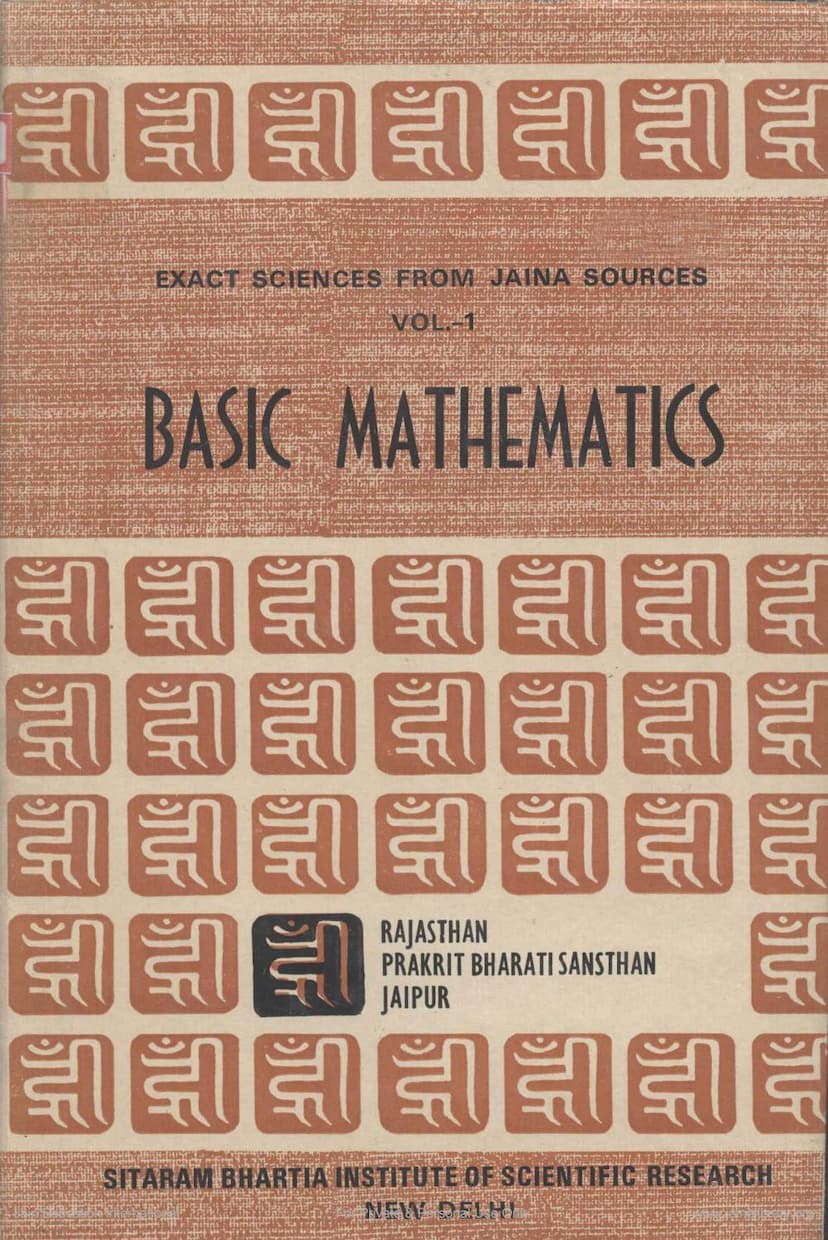Basic Mathematics
Added to library: September 1, 2025

Summary
"Basic Mathematics" by L. C. Jain, published by Rajasthan Prakrit Bharti Sansthan, Jaipur, in collaboration with Sitaram Bhartia Institute of Scientific Research, New Delhi, is the first volume in a series on "Exact Sciences from Jaina Sources." This book aims to highlight the significant contributions of ancient Indian scholars, particularly Jainas, to the field of mathematics, especially up to the 12th century AD.
The book's structure emphasizes the historical context and the depth of Jaina mathematical thought:
-
Introduction: This chapter sets the stage by outlining the book's objective, identifying key Jaina texts on mathematics (Karaņānuyoga group), discussing the recognition of Jaina mathematics, significant events in its study, and posing critical questions. It asserts the integral role of mathematics in all branches of knowledge, as acknowledged by Jain scholars like Mahāvīrācārya. The introduction also touches upon the division of Jaina literature and the importance of Jaina works in understanding Indian mathematics prior to Aryabhata. It notes the invention of the decimal system, the concept of zero, and the principle of local value, attributing these to unknown Indian mathematicians, with a particular emphasis on the Jaina School's development of the concept of infinity.
-
A Synopsis of World History of Mathematics up to Mahāvīrācārya: This chapter provides a broad overview of mathematical developments in ancient civilizations such as Sumer, Babylon, Egypt, China, and Greece, up to the time of Mahāvīrācārya. It briefly describes their contributions and the foundational nature of number and form in mathematics.
-
A Glimpse of Mathematics in the Tiloyapaņņatti: This section delves into the Jaina text Tiloyapaņņatti, describing its systematic treatment of basic mathematics applied to Jaina Karma theory. It details the "simile measure" and "number measure," explaining units of distance and time, including the concepts of pradeśa (space-point) and rajju (a large unit of length), and the Jaina classification of infinity into ten types. The logarithmic relationship between distance and time units is also discussed.
-
Certain Peculiarities in the Mathematics of Dhavala: This chapter focuses on the Dhavala commentary by Virasenācārya, highlighting its mathematical peculiarities. These include the understanding of the place value system (with variations from Sanskrit practices), the theory of indices (including concepts like successive squaring and cubing), and the knowledge of logarithms (termed Ardhaccheda for base 2). It also discusses fraction manipulation, various analytical methods (such as pramāņa, kāraṇa, nirukti, vikalpa, khaņdita, bhājita, viralana, and apahasta), a novel value of pi (π) (355/113) which may predate its use in China, and the use of an infinite process for calculating the volume of a frustum.
-
Certain Common Topics of Basic Mathematics: This chapter surveys common mathematical topics found in Jaina canonical works. It lists ten topics mentioned in the Sthānānga-sūtra, including fundamental operations, geometry, algebra, permutations and combinations, sequences, and mensuration. It discusses the use of the yavat-tāvat term in solving equations and the innovative place-value notation for subtraction. It also explores permutations and combinations as bhanga or vikalpa, the intricacies of sequences and progressions (including dyadic sequences and arithmetic/geometric progressions), and various formulas for mensuration related to circles, cylinders, and other geometric shapes. The chapter also briefly mentions symbolism developed within the Jaina school.
-
Transmission and Influence: This concluding chapter examines the transmission and influence of mathematical knowledge between ancient civilizations and the Jaina School. It explores potential influences between Egyptian, Greek, and Chinese mathematics and the Jaina School, highlighting similarities in concepts like the value of π, geometrical methods, and the use of large numbers. It concludes that the Jaina School of Mathematics was a significant source of transmission and influence, motivated by its unique Karma theory and cosmological studies, which required advanced mathematical abstraction.
The book aims to demonstrate that the Jaina tradition made substantial and often pioneering contributions to mathematics, particularly in areas like the concept of infinity, place-value systems, and early forms of logarithms, and that these contributions deserve greater recognition in the history of science.